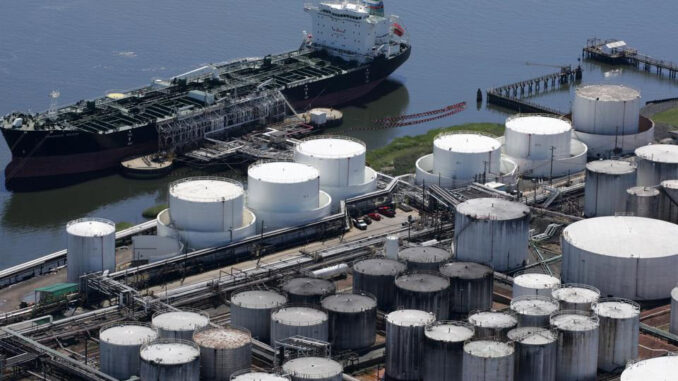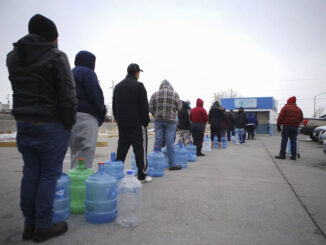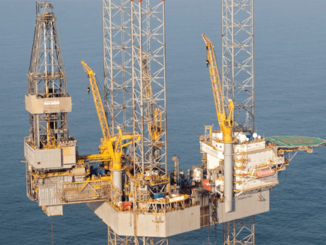
While extreme conditions hobbled rivals, the company’s intrastate gas pipelines and storage network kept running. The result was a $1 billion windfall, which nearly doubled Q1 distributable cash flow to $1.02 per share.
DCF covered the dividend (increased 3% this month) by almost a four-to-one margin. And the company used the resulting surplus and proceeds from a low-cost bond issue to pay off $1.9 billion in higher cost debt.
Management raised 2021 guidance for EBITDA to a range of $7.6 to $7.7 billion, and for DCF to $5.1 to 5.3 billion. It also reduced projected year-end debt-to-EBITDA to 3.9 to 4 times, well below the long-term target of 4.5 times.
During the earnings call, management emphasized parts of the business still face pressure from the pandemic and energy price cycle. Those include the flagship Natural Gas Pipelines unit (72.8% of Q1 earnings before depreciation and amortization), which saw a 3% decline in transport throughput and 25% lower gathering volumes. The shortfalls were due to year-over-year gas production declines in multiple regions, including the Eagle Ford, Haynesville, Rockies, Permian and Fayetteville shale basins.
On the positive side, results in the Bakken were solid. Kinder raised its market share of gas shipments to US LNG export facilities to 47%, after a whopping 25% lift in volumes. The company’s share of natural gas exports to Mexico rose to 55%, following a 3% increase. And management reported solid sequential throughput increases from Q4 in several basins, with the notable exception of the Eagle Ford.
The Products Pipelines segment (9.1% of Q1 EBDA) suffered a -10% decline in refined products volumes, keyed by a -29% year-over-year drop in jet fuel volumes. Gasoline and Diesel, however, each rose by 6%, and even jet fuel improved substantially from its 47% Q4 decline.
Crude and condensate volumes fell 28% from Q1 2020, but actually rose 2% sequentially from Q4. Terminals (7.9% of EBDA) enjoyed a 98% liquids utilization rate, excluding facilities out of service for routine maintenance.
Sales volumes at Kinder’s CO2 unit (10.2 % of EBDA) declined -26% as customers reduced enhanced oil recovery activity. Oil production dropped by 15% net of curtailed volumes, due primarily to reduced investment. And production mix factors coupled with expired hedges to depress realized selling prices by -7%.
Division EBDA, however, surged by 66%, thanks to management’s decision to “shed load” by shutting in production during Texas Freeze, selling unused electricity back to the grid at premium prices. That gain nearly matched the 78% lift from Gas Pipelines, more than offsetting a 4% decline at Products Pipelines and -12% lower Terminals EBDA.
Overall, Kinder’s results showcased its high asset quality and efficient operations. Management remained committed to deleveraging, as interest expense declined by -13.5%. And the company now expects to generate $2 billion in 2021 free cash flow after all CAPEX and dividends.
As for asset expansion, the Permian Highway Pipeline has a full quarter of smooth operations under its belt. The NGPL Gulf Coast Southbound project successfully entered service March 1, operating under a long-term 100% capacity based contract supplying a Cheniere Energy (LNG) LNG export facility. A new butane-on-demand blending system is now also in service under long-term contract. And the company’s energy transition investment initiative has its first project, “responsibly sourced gas” to supply Colorado Springs Utilities.
These new assets will boost Kinder results this year as lagging operations recover from the pandemic. But the biggest boost could come from the residual impact of the February Freeze: Growing realization by customers that securing firm natural gas shipping and storage capacity is critical to preventing more massive losses the next time the weather turns extreme.
During the earnings call, CEO Steven Kean noted “substantial interest” already from natural gas users to lock in “firm deliverability” before next winter. And he forecast a potential “triple digit millions” impact on the Kinder’s bottom line from low-risk incremental additions to system capacity. Business acquisition could arguably accelerate this year, depending on what Texas regulators do to adjust market structure.
The bottom line: Investors cannot count on a repeat of the company’s Q1 windfall. But the benefits to Kinder’s underlying business and balance sheet are likely to continue flowing the rest of 2021 and beyond.
The stock continues to present a powerful value proposition, combining a safe yield just shy of 7% with low-to-mid-single digit %age annual dividend growth and hefty share buybacks. My highest recommended entry point for Kinder is 22.
Forbes



